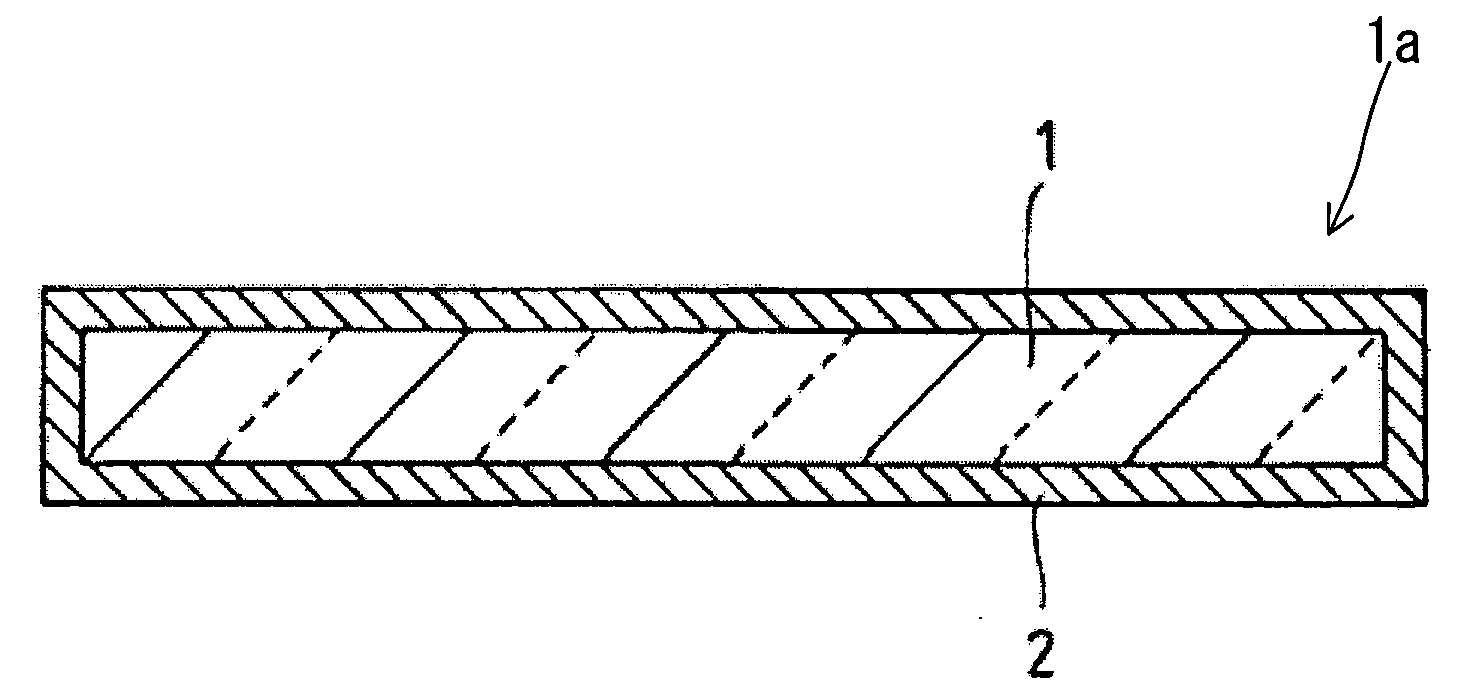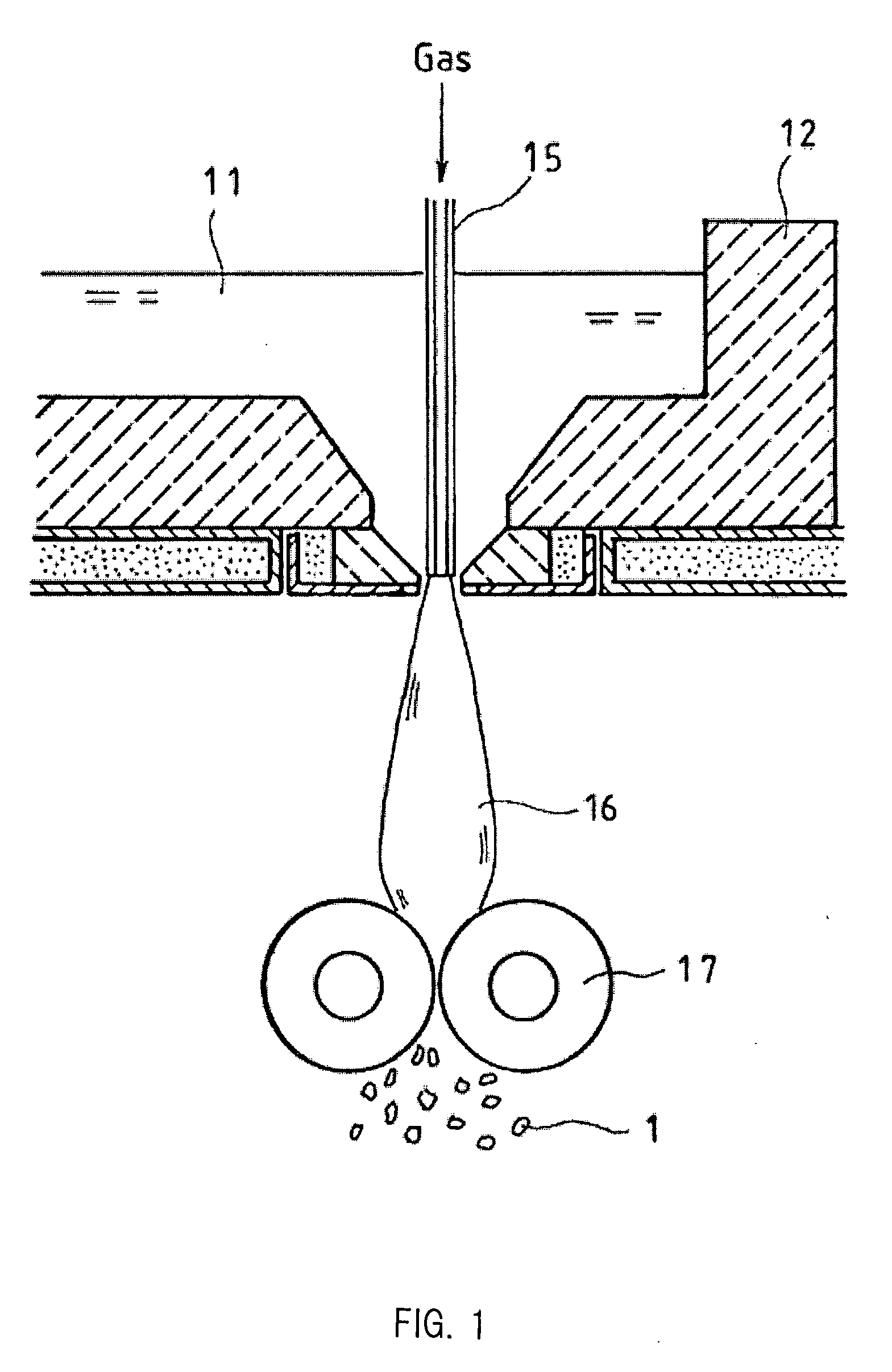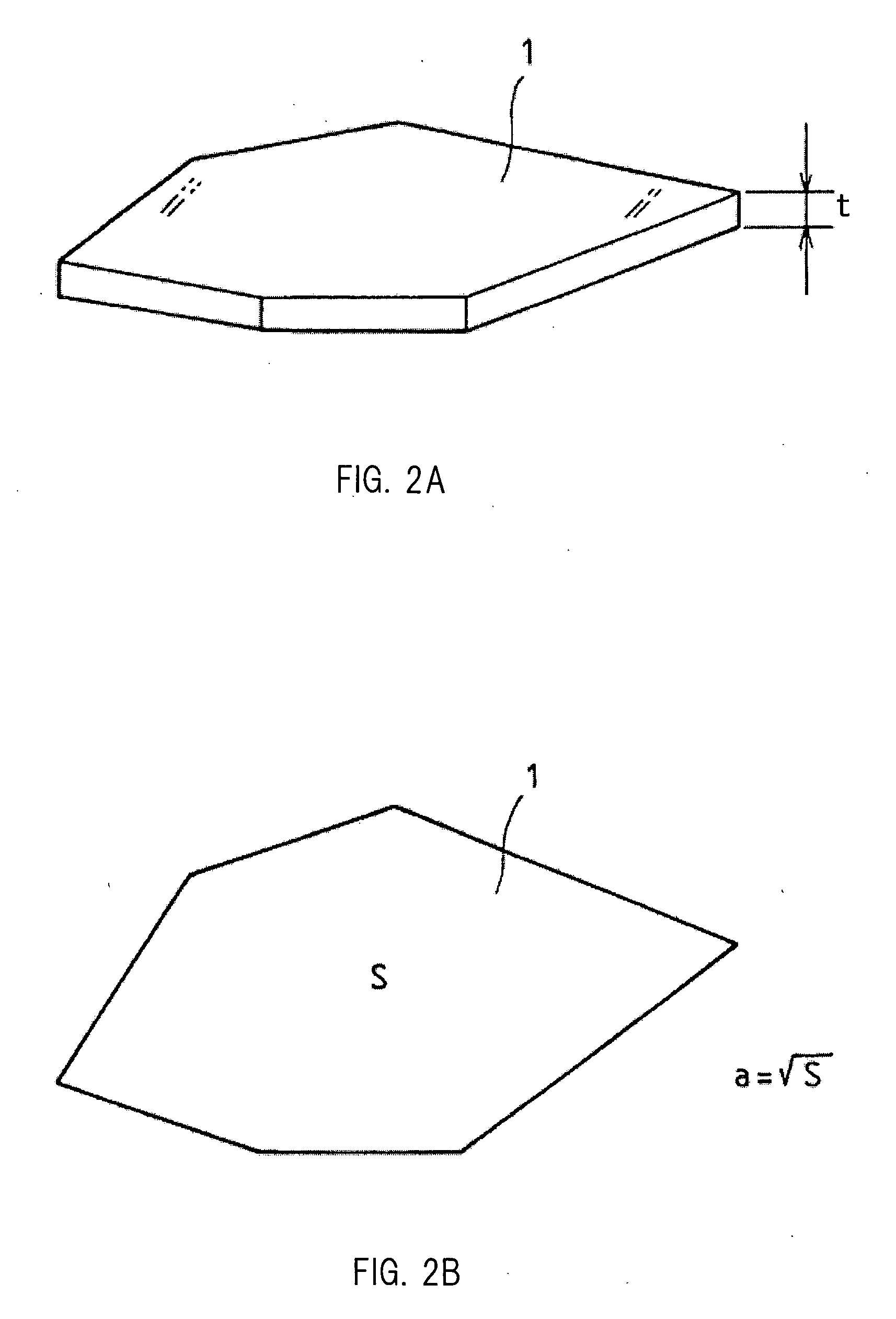Glass Flake
- Summary
- Abstract
- Description
- Claims
- Application Information
AI Technical Summary
Benefits of technology
Problems solved by technology
Method used
Image
Examples
examples
[0129]Hereinafter, the present invention is described further in detail using examples and comparative examples.
application examples 1 and 2
[0147]Glass flakes having the compositions of Examples 1 and 3 thus produced each were crushed to have suitable grain sizes. Thereafter, the surfaces of the glass flakes were coated with titanium dioxide by a liquid phase method. This liquid phase method was one described in JP 2003-012962 A, i.e. a method of allowing titanium dioxide to deposit on the surfaces of glass flakes from metal salt. The glass flakes with a coating film thus produced were observed with an electron microscope and thereby it was confirmed that a titanium dioxide coating film had been formed on the surface of each glass flake.
application examples 3 and 4
[0148]Glass flakes having the compositions of Examples 1 and 3 each were crushed to have suitable grain sizes. Thereafter, the surfaces of the glass flakes were coated with silver by common electroless plating. This common electroless plating was one described in Comparative Example 2 of JP 2003-012962 A. The glass flakes with a coating film thus produced were observed with an electron microscope and thereby it was confirmed that a silver coating film had been formed on the surface of each glass flake.
PUM
| Property | Measurement | Unit |
|---|---|---|
| Temperature | aaaaa | aaaaa |
| Temperature | aaaaa | aaaaa |
| Viscosity | aaaaa | aaaaa |
Abstract
Description
Claims
Application Information
 Login to View More
Login to View More - R&D
- Intellectual Property
- Life Sciences
- Materials
- Tech Scout
- Unparalleled Data Quality
- Higher Quality Content
- 60% Fewer Hallucinations
Browse by: Latest US Patents, China's latest patents, Technical Efficacy Thesaurus, Application Domain, Technology Topic, Popular Technical Reports.
© 2025 PatSnap. All rights reserved.Legal|Privacy policy|Modern Slavery Act Transparency Statement|Sitemap|About US| Contact US: help@patsnap.com



